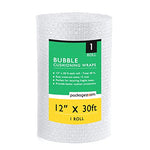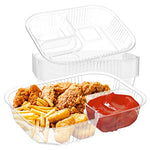You have no items in your shopping cart.
Trash bags are an essential component of daily life, yet many people do not realize the critical role they play in maintaining a clean and healthy society. They provide a convenient and effective way to contain and dispose of waste, reducing the amount of litter and debris in the environment, and protecting wildlife and preventing the spread of disease. However, the production and disposal of trash bags also have environmental impacts. To understand the importance of trash bags, it is essential to consider their history, the various types available on the market, the process of manufacturing them, and their environmental impact.
The history of trash bags dates back to the 1950s, when they were first introduced as a convenient and hygienic way to dispose of household waste. The first trash bags were made from polyethylene, a type of plastic, and were invented by Harry Wasylyk, a Canadian engineer. Since then, trash bags have continued to evolve, and today, they are available in a wide range of sizes, capacities, and materials, including biodegradable and compostable options. They are also used in a variety of settings, including households, offices, restaurants, and public spaces.
When it comes to choosing trash bags, there are many different types available on the market. They can vary in terms of size, capacity, thickness, and material. For example, there are small bags for kitchen waste, large bags for yard waste, heavy-duty contractor bags, and biodegradable and compostable options. It's essential to select the right type and size of trash bags for your needs, whether you're a household, office, or commercial establishment. Contractor bags, heavy-duty trash bags, are also a great option for construction sites, commercial settings, and larger projects.
The process of manufacturing trash bags involves several stages, including the machinery and equipment used, as well as the materials and resources involved. The process starts with the production of raw materials, such as plastic resins, which are then processed and formed into the desired shape and size of the trash bag. The bags are then printed, cut, and packaged for shipment. It's important to note that the manufacturing process of trash bags requires the use of fossil fuels and other resources, and it generates greenhouse gas emissions and other pollution.
The environmental impact of trash bags is a complex and multifaceted issue. On one hand, trash bags can help to reduce the amount of litter and debris in the environment, as they provide a convenient and effective way to contain and dispose of waste. This can help to protect wildlife and prevent the spread of disease. However, the production and disposal of trash bags also has environmental impacts. Many trash bags are not recycled and end up in landfills, where they can take hundreds of years to decompose. The decomposition of plastic trash bags can also release harmful chemicals into the environment.
To minimize the environmental impact of trash bags, it's important to use them responsibly and recycle them when possible. There are also alternatives to traditional plastic trash bags, such as biodegradable or compostable bags, which can reduce the environmental footprint of waste management. Additionally, it is important to consider the source of the trash bags and look for options that are produced with sustainable and environmentally-friendly practices.
In conclusion, trash bags are a vital component in waste management and pollution control. They provide a convenient and effective way to contain and dispose of waste, reduce the amount of litter and debris in the environment, and protect wildlife and prevent the spread of disease. However, it's essential to use them responsibly and recycle them when possible to minimize their environmental impact. Alternatives to traditional plastic trash bags, such as biodegradable or compostable bags, and heavy-duty contractor bags are a great eco-friendly option. Also, it's important to consider the source of the trash bags, and look for options that are produced with sustainable and environmentally-friendly practices.
In order to make the most informed decision when it comes to trash bags, it's important to be aware of the different types of trash bags available, their characteristics, and their environmental impact. To ensure that you have the right type and size of trash bags for your needs, whether you're a household, office, or commercial establishment, be sure to shop at a reputable source like www.trashrite.com. They offer a wide range of options to suit your needs and preferences, including biodegradable and compostable bags and heavy-duty contractor bags for an environmentally-friendly option.








